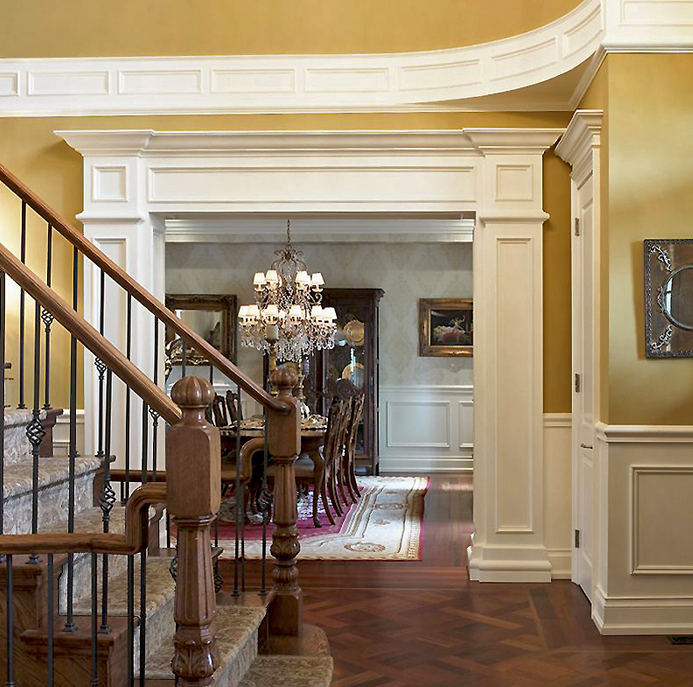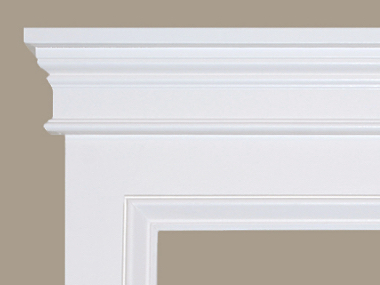What is Decorative Crown Moulding?
Decorative crown moulding is an architectural element that adds elegance and interest to your home. Typically installed at the junction of the walls and ceilings, it comes in various styles, materials, and sizes, allowing you to customize the look of your space. From traditional to modern designs, crown moulding can complement any home decor.
The History of Crown Moulding
Historically, crown moulding has been used since ancient times to add sophistication to architectural features. The Greeks and Romans used simple yet elegant profiles, while the Renaissance period brought more elaborate designs. Understanding its history can enhance your appreciation for this timeless decorative feature.
Types of Crown Moulding
When choosing crown moulding for your home, it’s essential to consider the type that best suits your style:
1. Traditional Crown Moulding
This type embodies classic design elements with intricate details, perfect for creating a formal atmosphere.
2. Contemporary Crown Moulding
With clean lines and minimal embellishments, contemporary crown moulding complements modern decor styles.
3. Colonial Crown Moulding
Characterized by its simple but elegant form, this style is ideal for homes with a historical feel.
4. Victorian Crown Moulding
This style often includes ornate details, making it a popular choice for homes built during the Victorian era.
Materials Used in Crown Moulding
The choice of material greatly affects the appearance, durability, and cost of crown moulding. Below are some common materials:
- Wood: Offers a traditional look but can be expensive and requires maintenance.
- Polyurethane: Lightweight and resistant to moisture, making it easy to install.
- Medium Density Fiberboard (MDF): Cost-effective and can be painted, but less durable.
- Plaster: Provides a classic finish, though it can be heavy and harder to install.
- Flexible Moulding: Ideal for curved surfaces and adds versatility to your design.
How to Choose the Right Crown Moulding for Your Space
Choosing the right crown moulding can be overwhelming, but it’s crucial for achieving the desired aesthetic. Here are some tips:
Consider the Ceiling Height
A higher ceiling can accommodate wider and more elaborate moulding. Conversely, a lower ceiling may benefit from a more understated profile.
Match Your Decor Style
Your moulding should complement your existing decor. For modern homes, consider sleek and simple designs, while traditional homes may benefit from ornate styles.
Color and Finish
While white is the most common color for crown moulding, you can also paint it to match your wall colors or finish it with a stain for a unique look.
Installation Process: DIY or Hire a Professional?
Installing crown moulding can be a satisfying DIY project, but it requires precision. Here’s a brief overview of both options:
DIY Installation
If you’re handy and enjoy home improvement projects, you might consider installing crown moulding yourself. Here are the basic steps:
- Gather your materials: crown moulding, saw, measuring tape, miter box, wood glue, and nails.
- Measure and mark the walls where the moulding will go.
- Cut the moulding at appropriate angles using a miter saw.
- Attach the moulding to the wall and ceiling, ensuring a tight fit.
- Fill any gaps or nail holes with caulk or putty and paint as desired.
Hiring a Professional
If DIY isn’t your forte or you desire a flawless finish, hiring a professional might be the best route. Here are some pros and cons:
| Pros | Cons |
|---|---|
| Expert installation | Higher cost |
| Time-saving | Less personal involvement |
| Guaranteed craftsmanship | Dependent on the contractor’s schedule |

Cost Considerations
The cost of crown moulding varies based on numerous factors, including material, style, and labor. Here’s an overview:
Material Costs
Generally, wood and plaster are the most expensive, while MDF and polyurethane are more budget-friendly. Here’s a breakdown of approximate costs:
| Material | Cost per Linear Foot |
|---|---|
| Wood | $2.50 – $10 |
| MDF | $0.75 – $3 |
| Polyurethane | $1 – $5 |
| Plaster | $5 – $15 |
Installation Costs
If hiring a professional, expect to pay an additional $2 to $8 per linear foot for labor, depending on your location and the complexity of the job.
Benefits of Decorative Crown Moulding
Investing in decorative crown moulding carries numerous benefits, some of which include:
- Aesthetic Appeal: It adds elegance and sophistication to any room.
- Increased Property Value: Well-installed moulding can enhance the value of your home.
- Improved Interior Design: It helps define spaces and can create a more cohesive look.

Common Mistakes to Avoid
Even experienced DIYers can make mistakes. Here are a few common pitfalls to steer clear of:
1. Skipping Measurements
Accurate measurements are essential. Always double-check before cutting.
2. Underestimating Angles
Obtaining accurate miter cuts is crucial for a professional finish. Take your time!
3. Choosing the Wrong Size
Overly ornate moulding can overwhelm a small room, while too thin moulding may look insignificant in larger spaces.
FAQs about Decorative Crown Moulding
What styles are available for crown moulding?
Styles range from classical and ornate to modern and minimalist, allowing you to choose one that fits your home’s aesthetic.

Can crown moulding be painted?
Yes! Crown moulding can be painted to match your room’s decor. Just ensure you choose a paint suitable for the material.
Is crown moulding suitable for every room in the house?
Yes, crown moulding can enhance the look of any room, but be sure to choose a style that fits each room’s purpose and aesthetics.

How do I clean and maintain crown moulding?
Regular dusting and occasional cleaning with a damp cloth will keep your crown moulding looking fresh and new.
Can I install crown moulding in a bathroom?
Absolutely! Just ensure you select a moisture-resistant material to prevent damage in humid areas.